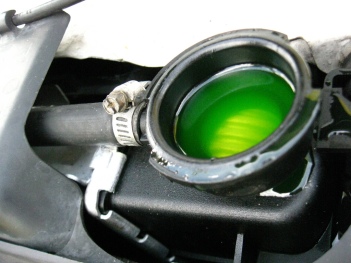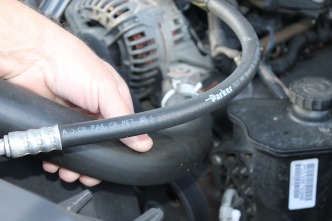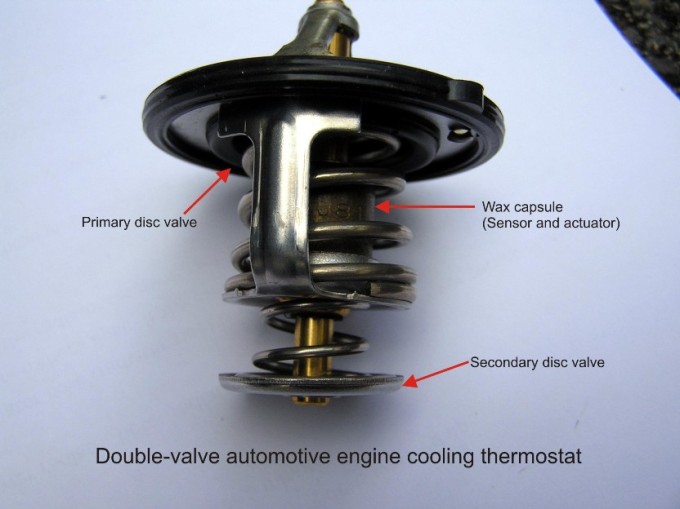Tips & Tricks for Maintenance Reminders to Help Keep Cars, Trucks, & SUV's Cool
Posted on January 17 2017
Keeping Cool

You’ve made a large investment in your vehicle; even if it was over a decade ago (R.L. Polk and Co. reports that the average age of vehicles in the United States is more than 11 years old). While it is tempting to delay car maintenance when your time or your wallet are in a pinch, you may actually be setting yourself up for more costly and time-consuming repairs in the future.
“Surveys of certified technicians show that a well-maintained vehicle lasts longer, retains more of its resale value, pollutes less, and gets better mileage than one that’s been neglected — to say nothing of being safer to operate.” Quoted from the article Don’t Scrimp on Maintenance, written by Tony Molla, VP of communications for ASE (the non-profit National Association for Automotive Service Excellence). Why? Neglect causes components to wear out faster and can result in minor problems growing into more expensive repairs.
This means periodic maintenance is needed more than ever before if you want to get the most from vehicle. Although hard failures are impossible to prevent completely, preventative maintenance is a huge part of the puzzle when it comes to minimizing those failures.
Learning about your vehicle’s scheduled maintenance intervals isn’t very difficult at all, as your vehicles owner’s manual typically has the manufacturer’s recommended maintenance schedule. If you don’t have a copy of the owner’s manual, the maintenance schedule can usually be found online through sites like Edmunds and similar.
The key thing to remember about the manufacturer’s recommended maintenance schedule is that it is based on “normal driving”. We here at SDT know that we’re almost never involved in “normal driving” conditions. Whether it’s a heavy braking foot to stop your hood from becoming part of the next car’s trunk, putting the “oh-Boy!” pedal to the floor to get up that ruthless sand dune, or dragging that we can bet that the conditions most of us subject our vehicles to are anything but normal.
Something else to consider when having purchased a pre-owned vehicle, is its maintenance history. Sure the belts may look decent and the oils may be clean and not smell like a pot of burnt coffee, but if you don’t have great physical evidence or a paper trail that tells you the history of the vehicle’s service, you may want to consider performing some of the more basic services shortly after purchase.
You can also take the vehicle to any repair facility – preferably one that’s ASE certified and participates in the MAP program – to have a full inspection performed. A good pair of well-trained professional eyes may shine some light on something you may have missed. They’ll also have access to the manufacturer recommended service intervals too, just in case there’s some strange service interval that you didn’t know about.
Did you know that the early 80’s Ram trucks with the 2.3 Diesel want the balance shaft belt changed every 50k miles?
Below is a short (and fairly incomplete) list of some commonly overlooked or postponed maintenance items.
We don’t want to plain-Jane explain why these items are important or what the parts do, we want to express it in a way that might be more applicable to the scenarios your vehicle might be subject to. So keeping with the SDT spirit we’ve decided to give a rundown on how these things could affect your rig in an off-road scenario.
For our first topic, we’ll be focusing on the cooling system.
Coolant:
Antifreeze in the Radiator

The coolant in your engine doesn’t necessarily suffer from direct failure. However old coolant can lead to a slew of other problems with your cooling system. Engine coolant must maintain a certain pH level (acidity), which can be affected by various things such as time/age, or improper mixtures of antifreeze and water, or using tap/drinking water vs distilled water.
When the pH level drops the coolant becomes more acidic. This can lead to gaskets and o-ring seals being eaten up and possibly causing leaks in the system.
Because of the various dissimilar metals in most of today’s engines, the acidic coolant can actually begin to generate electrical energy through a process called chemical electrolysis. This is the same process a lead-acid car battery uses to generate electricity.
Cool right? Not at all – This electrolysis process actually eats away at certain metal parts, with aluminum being one of its favorites to consume. Most modern engines use quite a bit of aluminum in the cooling system for things like the water pump, water pump housing, thermostat housing/coolant neck, as well as various other components. This process will degrade the parts from the inside out, making it tough to notice from the outside until it’s too late.
Springing a leak from somewhere like the water pump is not something you want to have to deal with while out on a trail.
A note to the GM folks out there: if you’ve got a vehicle that still has that terrible orange Dex-cool in it, get it out. Dex-cool loves to eat everything it touches. There have been many service bulletins, recalls, and even a few lawsuits which have happened after GM was forced to admit that Dex-cool was a problematic coolant and was causing premature failure of many cooling system components.
Cooling Hoses:
Hose Check

We all know that rubber degrades over time, especially with heat and chemical interaction. This is applicable to our cooling/heater hoses as well. Keeping in mind that our cooling systems are a pressurized system, having old rotting hoses in the system is just asking for disaster.
Visually inspect the hoses. If they seem to be ballooned or expanded from their normal size (compare it to where the hose connects to a fitting) or if the hose looks to be collapsed, replace it. Also give them a tactile inspection, feel them, go ahead and give them a squeeze. If they feel excessively soft, or too firm/hard, they’re most likely on their way out and should be replaced.
Make sure not to overlook the heater hoses, and small bypass hoses. These little buggers can be difficult enough to reach when you’re in a shop, let alone trying to get to them sitting on the side of a road.
Thermostat:
Double Valve Automotive Thermostat

Thermostats perform a pretty basic function: regulating the flow of coolant within the engine so that it maintains a consistent temperature for optimum emissions control and engine reliability.
Most thermostats are purely mechanical, and operate in a pretty simple manner. There is a pallet material (typically a copper loaded wax) inside of a cylinder which expands/contracts as it heats/cools. This expansion/contraction opens or closes the thermostat, allowing the coolant to be kept within the engine block only, or to circulate through the radiator and cooling system. Unfortunately (most) older thermostats tend to fail by getting stuck in a closed condition, which leads to lack of coolant circulation and overheating.
As most of us are aware, overheating an engine can lead to some very costly repairs. Luckily most thermostats are extremely reasonable in price, as are the gaskets which seal their housings, and the job can typically be performed in very little time with basic hand tools. Replacing your thermostat “just because” is a very small price to pay when compared to the security it provides you and your engine.
While Street Dirt Track does not sell the vehicle parts discussed today, when we need to do our basic maintenance like this some of the guys (and girls) in our shop buy these items from RockAuto.
So there you go, some tips & tricks to maintaining your ride. Whether it was a refresher or you learned something new, Street Dirt Track is here to help. Keep Cool!!



Street Dirt Track Newsletter
Connect